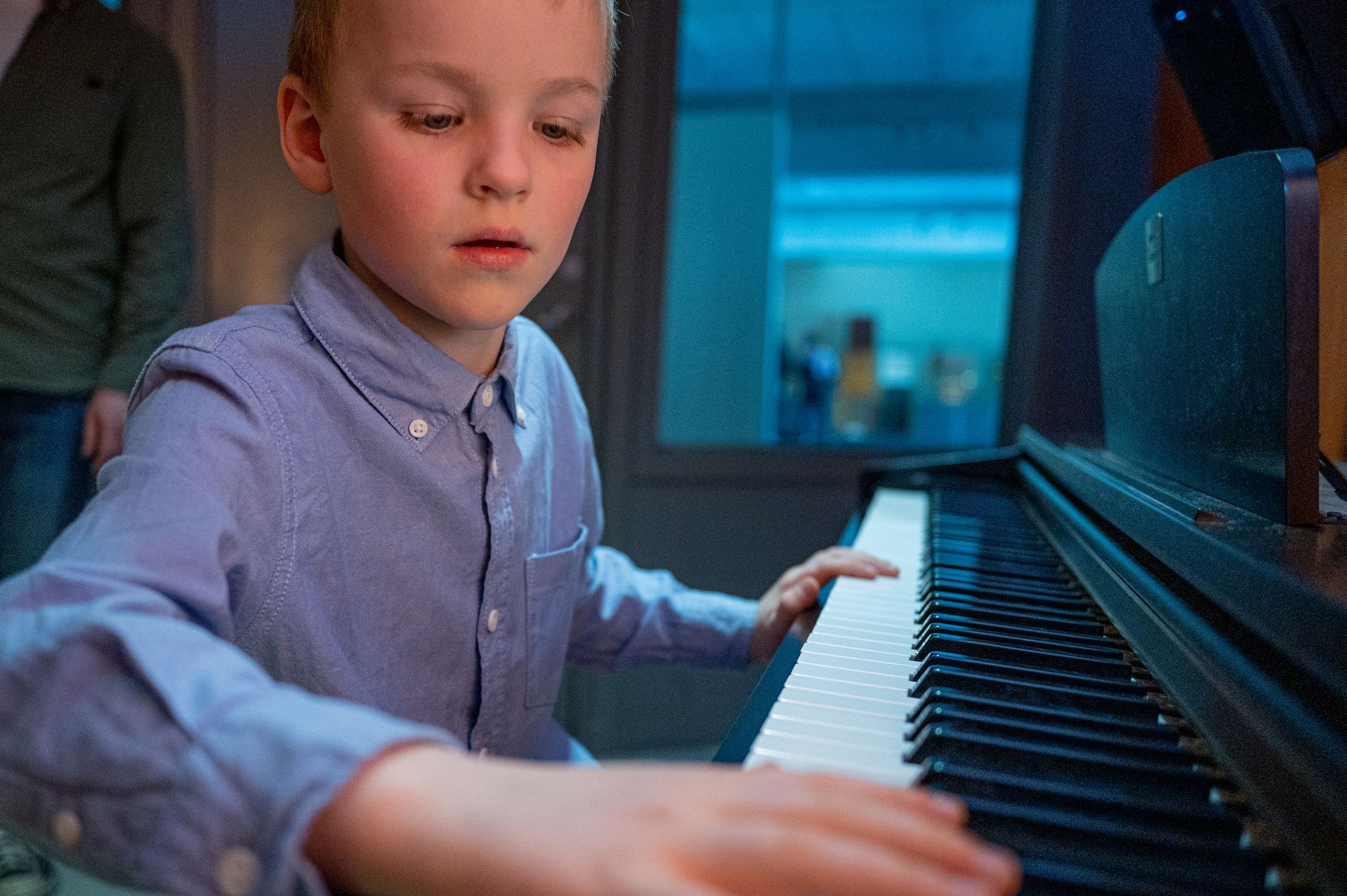Music machines

See, hear and make music! In the exhibition about music and technology you will find unique objects, lots of sound and lots of activities! The activities vary with the weekend programme.
The exhibition "Music Machines" tells a number of stories about the relationship between music and technology over the past couple of hundred years.
The stories are linked to several unique items. Among other things, visitors can see, hear about and listen to the Kaufmann family's rare jukebox from the mid-19th century, Norway's oldest sound recording from 1879 which has now been digitized, the enigmatic theremin from the 1930s, the echo machine which in 1957 created the sound of "Det so much happens on the main island” – and much, much more!
Most of the items belong to The Norwegian Museum Of Science And Technology 's own collection and are now being lifted out of the magazines. In addition, the museum has been allowed to borrow several treasures from other museums and private individuals at home and abroad.
Here are some of the objects you will find in the exhibition:
- The Kaufmann family's rare music machine from 1820-40. A world-famous music machine that shows the finest craftsmanship of its time.
- Tinnfolien with Norway's first sound recording from 1879. The recording was made at Tivoli in Kristiania. It has not been heard since the 1930s. Now it has been digitized by foreign experts and can be heard in the exhibition.
- The coin-operated music machine that stood at café Geita in Grensen in the 1890s.
- Queen Maud's self-playing piano and gramophone from around 1900.
- The enigmatic theremin from the 1930s. The first electronic musical instrument. Played without touch. The only older Norwegian theremin.
- The Hammond organ that stood in the Regnbuen restaurant in Oslo from the late 1930s to the 1950s. A gem for all organ enthusiasts.
- The echo machine that created the sound of Kari Diesen's hit "Det hender so mangt på hovedøen" in 1957.
- Mellotron used in the Roger Arnhoff studio in the late 1960s. Similar instruments created the experimental sounds on the Beatles songs Back in the USSR, Little Piggies and Strawberry Fields Forever.
- The panels from Knut Wiggen's computerized studio EMS in Stockholm in the 1970s. Wiggen was a pioneer in electronic music. He was recently presented during the festival games in Bergen.
- The synthesizer (Yamaha DX7) that Magne Furuholmen in A-ha used in the 1980s.

Thermin on display. Photo: NTM / Thomas Fjærtoft
Technology and music
In what ways has technology influenced music? How have different social groups related to new music technology? In the last couple of hundred years, there has undoubtedly been a rapid and comprehensive development in music technology. Today, development plays an absolutely central role both in the production, performance and use of music. Now we can listen to almost anything, almost anytime and almost anywhere!
New music technology has always created debate . Some have allowed themselves to be excited by the possibilities of creating new sounds and timbres. It has also been claimed that the technology has contributed to democratization, in that more people have gained access to the music.
Others, on the other hand, have feared that the music would suffer, as the machines become more important than the creative person. The development has also created a fear that those who made the music would lose control over it. In the past, tape players and music cassettes were a threat to copyright, today it is piracy and online file sharing that threaten.
Sound studio
In the exhibition's two sound studios and around the jukebox table, visitors can freely create their own music. You can test your drumming skills, play the theremin and program music boxes. In the sound lab, you can experiment with sound and music on data. The exhibition also has a stage for concerts and corporate events.




-1cefa9cb.jpeg)


